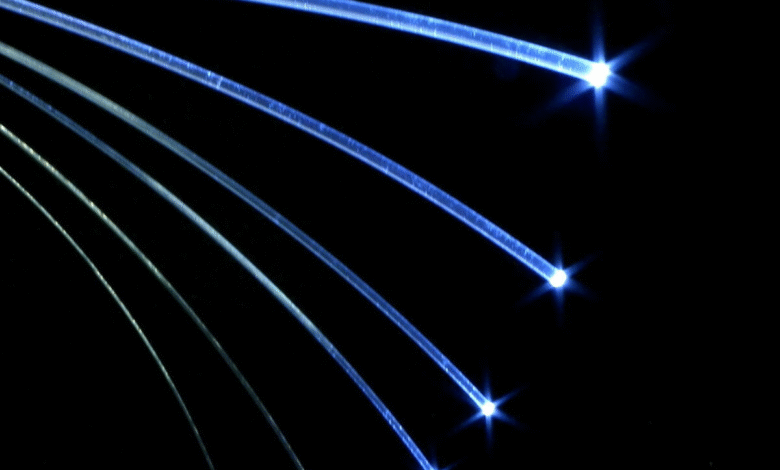Guiding the Light: The Hidden Components Powering Medical Imaging Devices

Since healthcare technology is advancing so fast, medical imaging tools play a key part in determining diagnoses and developing treatments. Among the complex array of components that make these devices function seamlessly, one often overlooked yet indispensable part is the endoscope light guide tube. With this, light flows into the body, making it possible to clearly see inside the patient during minimally invasive operations.
Understanding how the endoscope light guide tube works and its integration within broader medical devices sheds light on the remarkable precision engineering that underpins modern medicine.
What Is an Endoscope Light Guide Tube?
An endoscope light guide tube is essentially a specialized conduit designed to transmit light from an external source deep into the body through an endoscope. The main feature of it is that it uses bundles of optical or glass fibers to carry intense light with very little loss. Instead of being rigid, like previous lights, these tubes bend and turn with the endoscope as it goes through different parts of the body.
Due to its design, the tube provides high and uniform light to see and operate on tissues and organs during a surgery. Lacking internal lighting, doctors would depend on remote or dim images which reduces their capacity to identify and manage diseases.
Light guide tubes are now used in every procedure like gastrointestinal endoscopy, bronchoscopy, arthroscopy and laparoscopy. They make it possible for doctors to look at the esophagus, lungs, joints and abdominal cavity via small openings or through natural body openings. The effectiveness of these techniques depends greatly on how well illuminated the samples are, showing light guide tubes are crucial.
Integration of Light Guide Tubes in Medical Devices:
The endoscope light guide tube is embedded in a variety of medical devices, especially those used in minimally invasive procedures. Together, the light guide, cameras and lenses of an endoscopy system give surgeons and physicians real-time, detailed images while they work.
In advanced medical devices such as robotic surgical systems, the integration of light guide tubes becomes even more complex. Lasers, cameras and robots must work together precisely for delicate procedures. Regular and bright light inside the light guide tube supports the surgeon in navigating through complex areas in the body smoothly.
Because of the tiny form of endoscopes, doctors can now explore different ways to attach light guide tubes. Producers have to ensure that the tube’s diameter, how flexible it is and how much light it transmits are suitable to work in compact devices without impacting its ability to do its job. So, developers have made flexible and lightweight tubes that do not lose light quality.
Besides endoscopes, the light guide tube also plays a role in different devices. Similar fiber optic lighting technology is applied in other medical devices such as dental scopes, otoscopes, and even specialized microscopes used in surgery. Their usefulness in multiple diagnostic and therapeutic devices highlights how much they influence healthcare technology.
Material and Design Considerations:
The effectiveness of an endoscope light guide tube hinges on the careful selection of materials and meticulous design. Usually, the tubes are built using groups of glass or polymer fibers. Using high-purity silica to make glass fibers results in both strong transmission of light and outstanding resistance to heats. In some applications where durability and biocompatibility are most important, designers are turning to polymers since these materials are more flexible and light.
Designers must also keep in mind the need for flexibility, appropriate diameter and relevant coating options. Precise engineering is needed to ensure that the tube bends nicely without damaging the fibers which helps maintain its durability. They act as a safety layer for the fibers, stopping sterilization, water exposure and wear from harming the light through the lifetime of the device.
What materials are chosen depends on the environment in which the process is carried out. As an illustration, high-temperature sterilization requires the light guide tube to remain functional after many cycles. This is essential because endoscopes and related medical devices must be sterilized between patients to prevent infections. For this reason, heat resistance and strong chemical stability are needed.
Because patients want less discomfort and access to small body passages, the diameter of the light guide tube is sometimes reduced so it can fit into the thin endoscopes being used today. Producing these parts with precision and making them reliable requires top manufacturing and control methods.
How the fibers are set up inside the tube is also very important. The fibers are set up so that the light travels as quickly and smoothly as possible which helps prevents it from scattering. Different techniques and coatings are tested by manufacturers to help brightness and even distribution of the light from monitors.
Precision Manufacturing for Medical-Grade Light Guide Tubes:
Producing medical-grade endoscope light guide tubes involves a highly specialized manufacturing process. The light transmission is improved and losses are reduced when the fibers are well-drawn, grouped into bundles and properly placed near each other. With advanced machinery, the fiber is joined and polished so that light moves through the tube with no seams.
The process is always strengthened by strict quality control. Intensity, uniformity and strength of the light are all verified for each tube during testing. Since these tubes form an integral part of medical devices used in sterile, high-risk environments, they must meet strict regulatory standards, such as ISO certifications and compliance with FDA guidelines.
Also, the assembly process requires precision manufacturing to ensure the light guide tube joins properly with other items like lenses, cameras and control systems. Small defects or misalignments can have a major impact on a device’s function which underscores how vital it is to manufacture these parts with care.
Innovation and the Future of Light Transmission:
As the demand for more sophisticated and less invasive medical devices grows, innovation in light transmission technologies is rapidly advancing. Researchers and manufacturers are exploring new materials and designs to enhance the performance of endoscope light guide tubes.
Advances are being made in producing light guides that are very flexible and as thin as a strand of hair for usage in tighter passages. Thanks to developments in light sources, light guide tube manufacturers can use LEDs and lasers to make tubes that are brighter, more energy-efficient and have less heat.
Automatic changes in lighting are becoming possible, where the system can brighten or focus based on whatever procedure is happening. In this way, images can be cleared up with less chance of harming tissues because of overexposure to light.
Some work is being done towards making materials recyclable and lowering the environmental drawbacks from throwaway components. Implementing these innovations should make medical imaging devices improve in safety, effectiveness and for the environment.
Conclusion:
The endoscope light guide tube, though small and often unnoticed, is a fundamental component powering modern medical devices. Clear illumination into the most difficult body parts allows doctors to guide and handle treatments appropriately. Applying advanced materials, detailed design and precise manufacture gets these tubes ready for use in today’s demanding hospitals.




